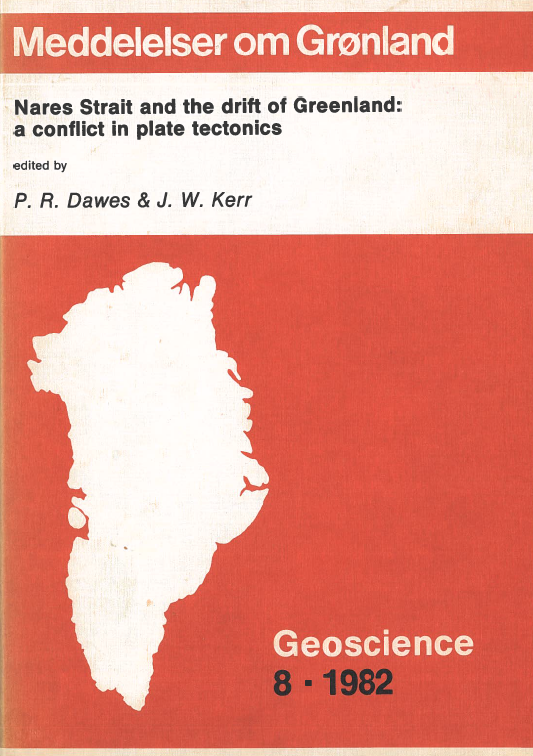Upper Ordovician to Silurian facies patterns in eastern Ellesmere Island and western North Greenland and their bearing on the Nares Strait lineament
DOI:
https://doi.org/10.7146/moggeosci.v8i.139575Abstract
The upper Ordovician and lower Silurian sediments in the northern Nares Strait region formed during a series of platform margin collapses and platform subsidences. Facies changes from platform carbonates to slope and trough elastics are intricate, but two almost vertical facies fronts can be correlated across Nares Strait.
The northernmost facies front is the carbonate platform margin (associated with a horst) which apparently formed at the fault-bounded edge of the stable craton. At this margin there is a facies boundary (interdigitation) between platform carbonates and elastics of the trough and this feature had a stationary location during the upper Ordovician and lower Silurian. On Ellesmere Island it is traceable from Cañon Fiord to Judge Daly Promontory; on Greenland, directly along strike, available data indicate that the linear coastline of northern Hall Land, and probably Nyeboe Land, coincides with the platform margin. There appears to have been little or no post-depositional offset of this margin along Nares Strait.
Mudstones progressively migrated southward in Ellesmere Island during the upper Ordovician and the same facies reached Washington Land and Hall Land, Greenland, in the middle Llandovery (lower Silurian). The line of interdigitation (facies front) between carbonate and mudstone facies was a static, near vertical, feature from the middle Llandovery to upper Silurian in Washington Land and into the lower Devonian in Ellesmere Island. This facies boundary has a slightly curved form when projected across Nares Strait; a shape which is entirely consistent with the meandering nature of facies boundaries.
The present distribution and relationship of upper Ordovician to lower Silurian sediments indicate that they were part of a single laterally continuous sedimentary regime. Both vertical facies fronts arc entirely consistent with no post-depositional movement along Nares Strait; however, they cannot rule out left-lateral displacement of as much as 25 km. Displacements greater than this introduce far more geological problems than they solve.
Downloads
Published
How to Cite
Issue
Section
License
Coypyright by the authors and the Commision for Scientific Research in Greenland / Danish Polar Center. No parts of the publications may be reproduced in any form without the written permission by the copyright owners.


